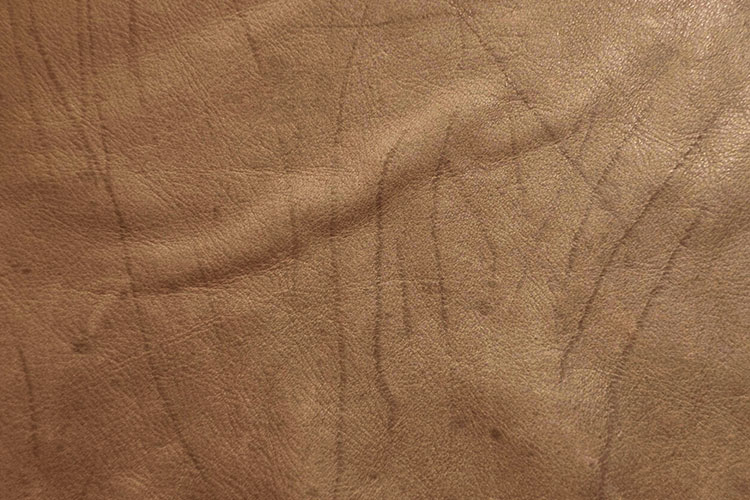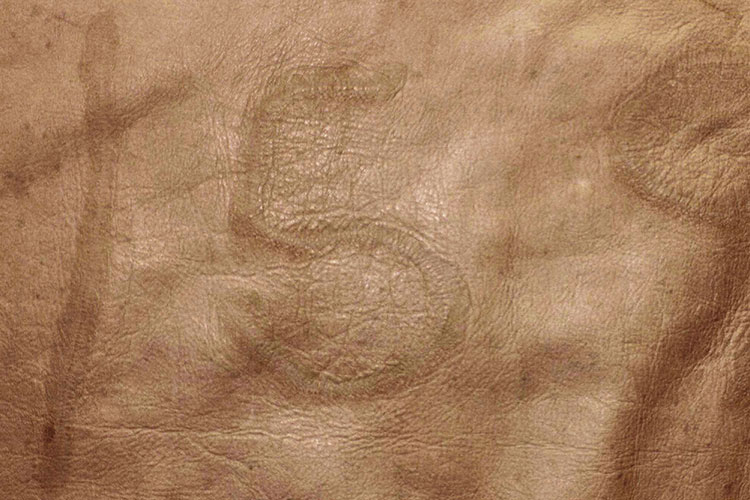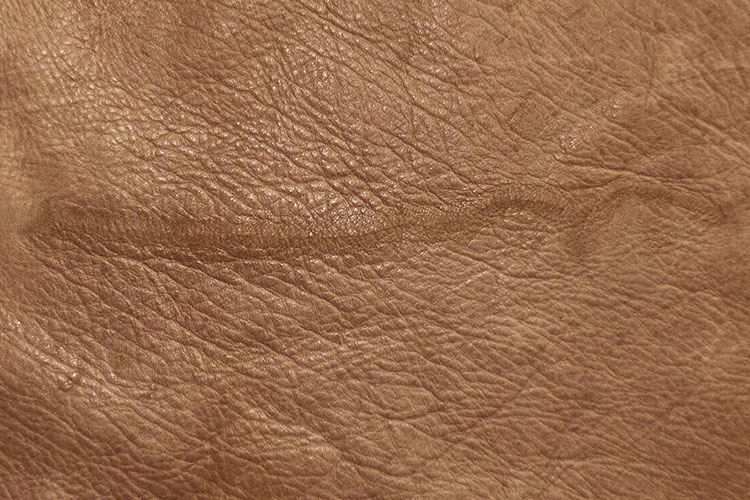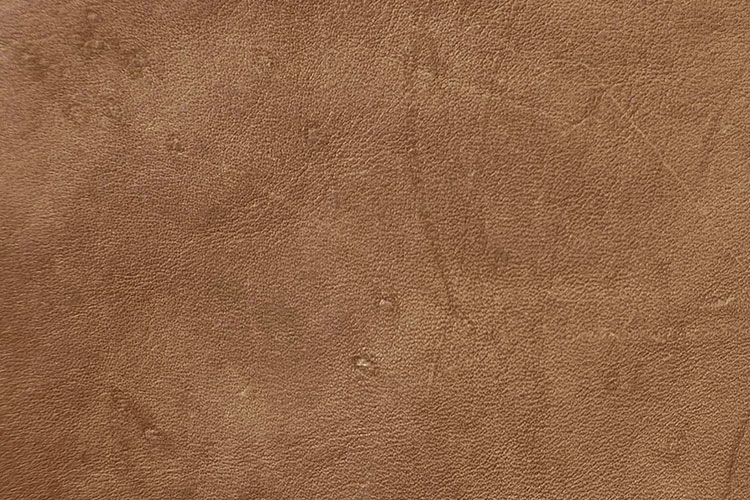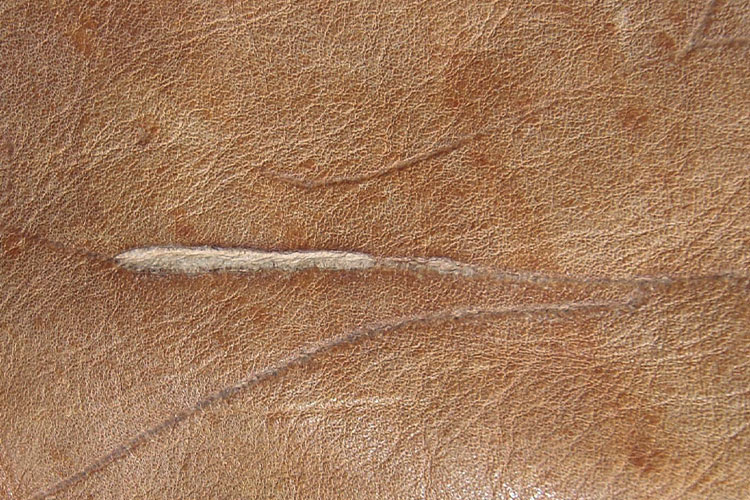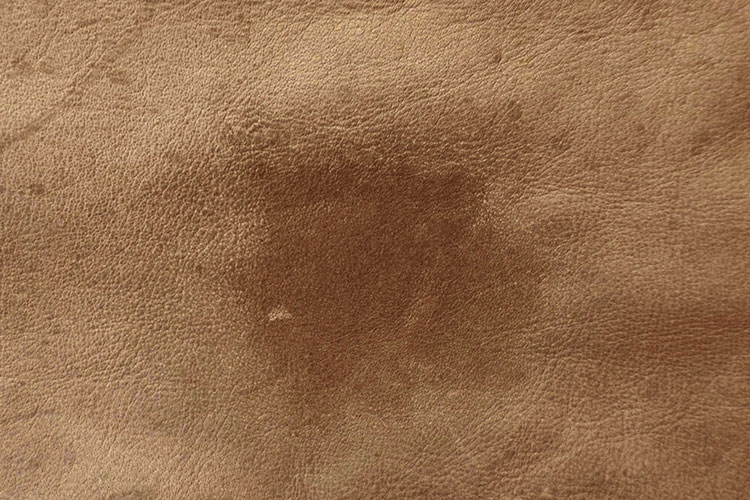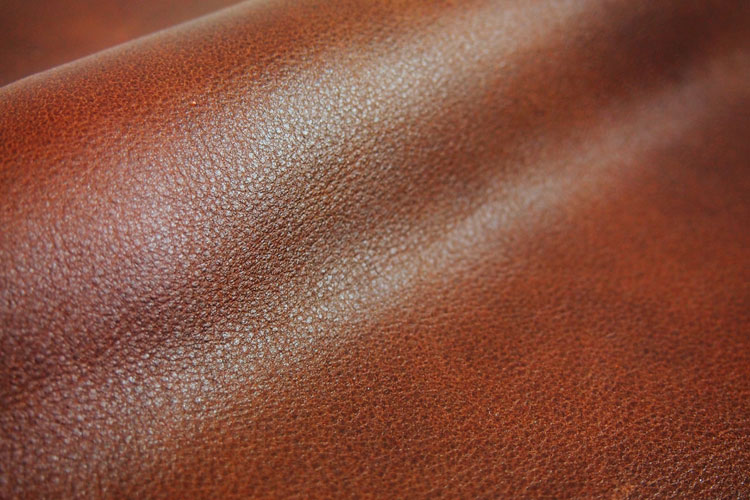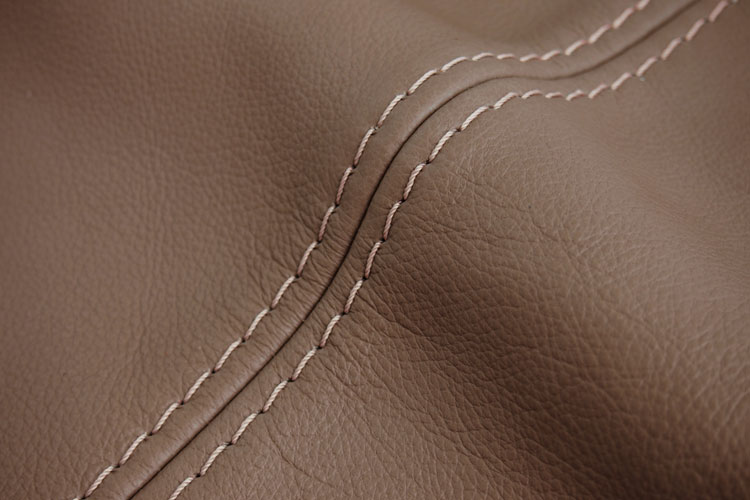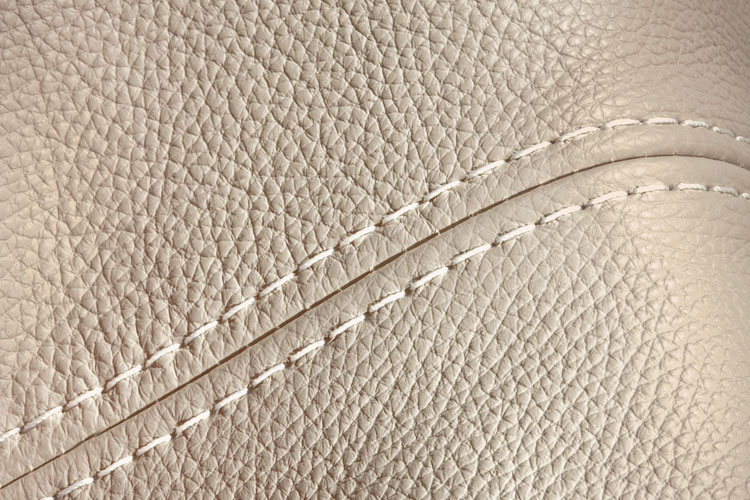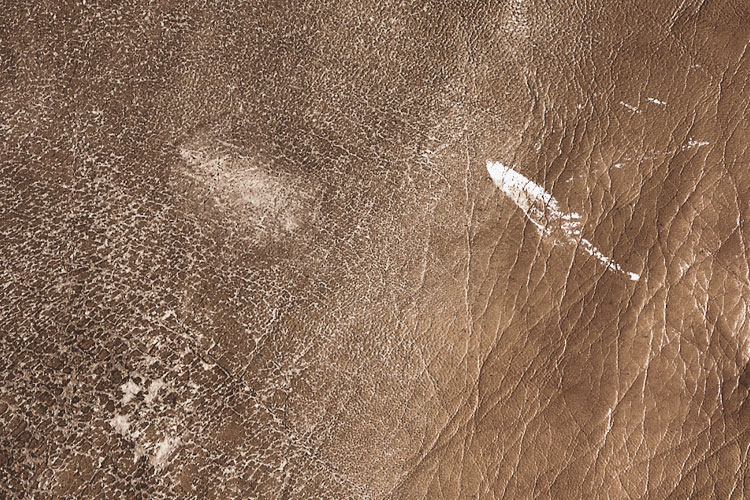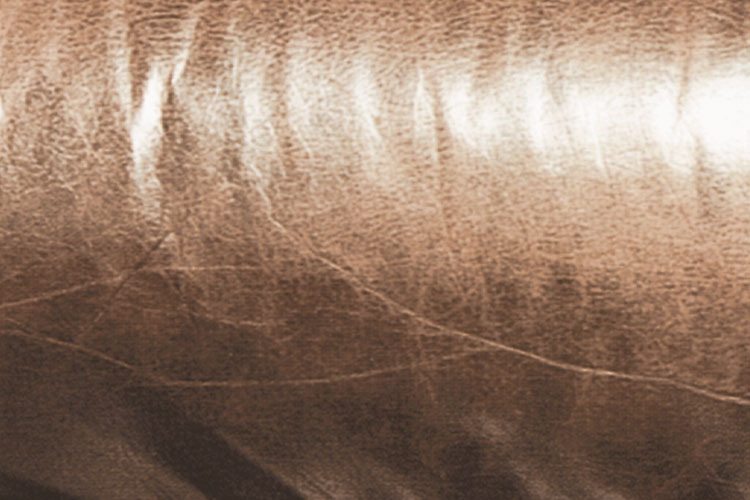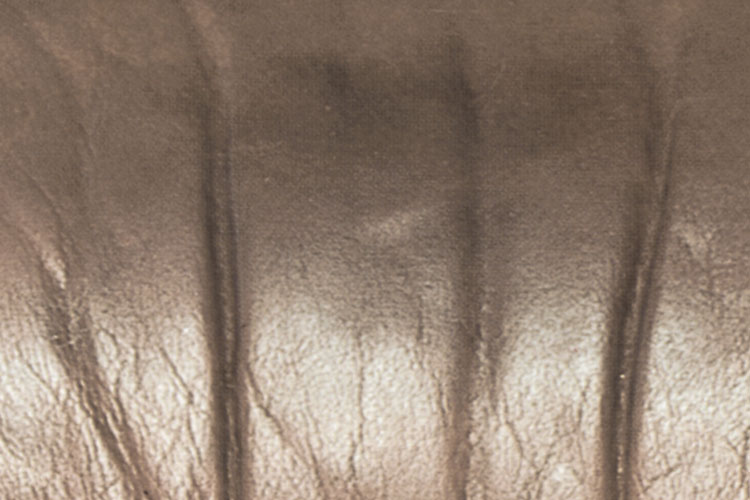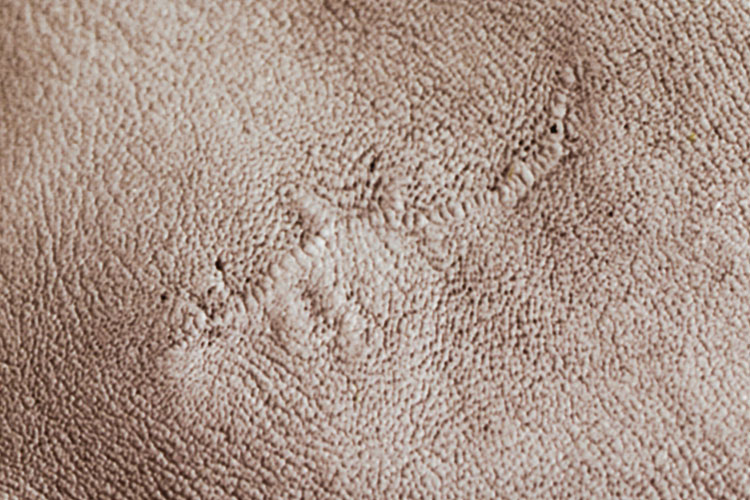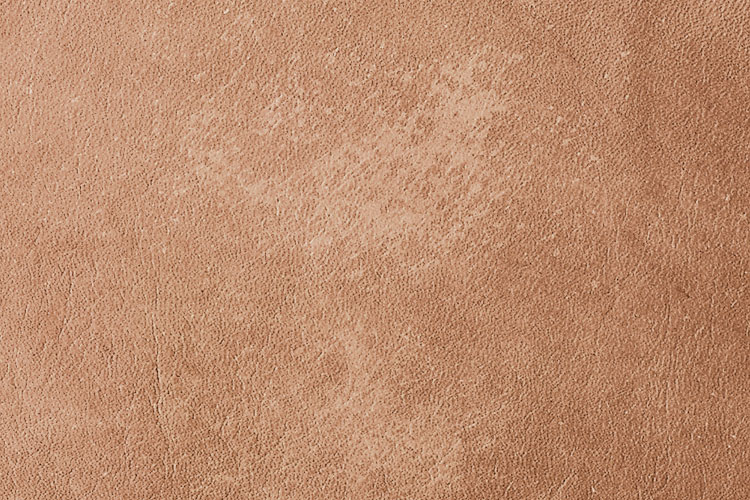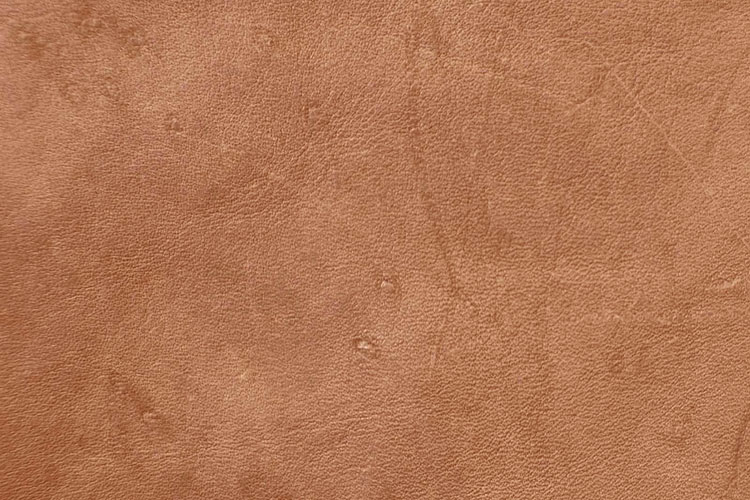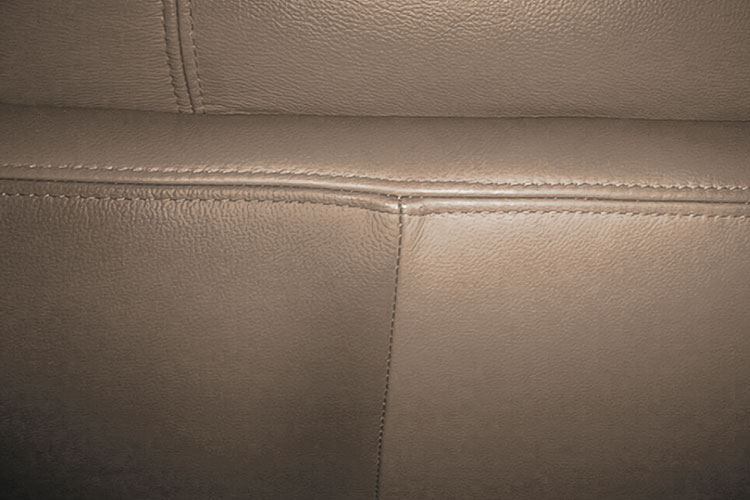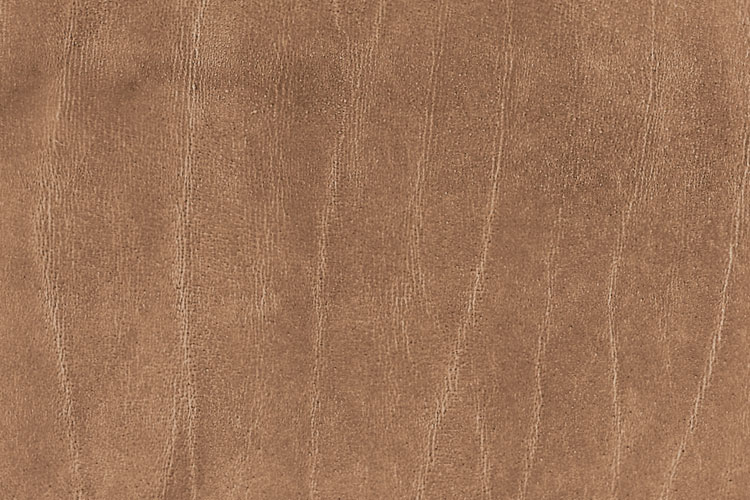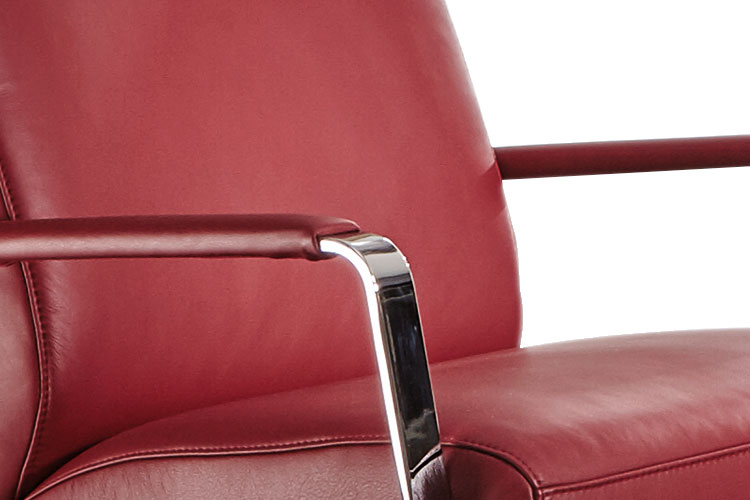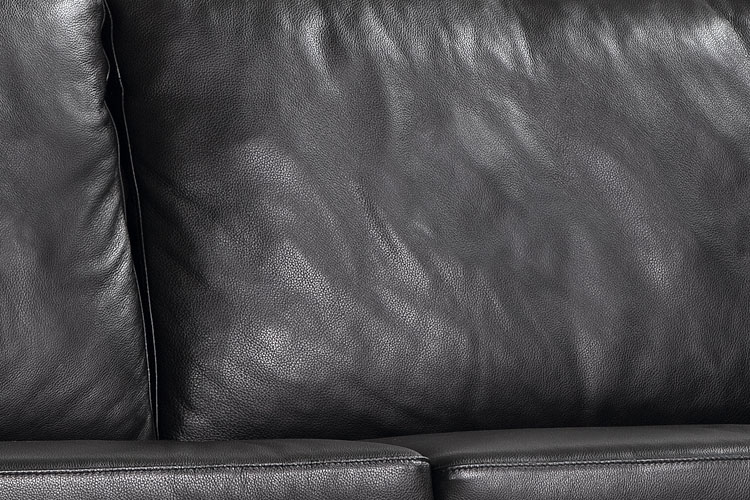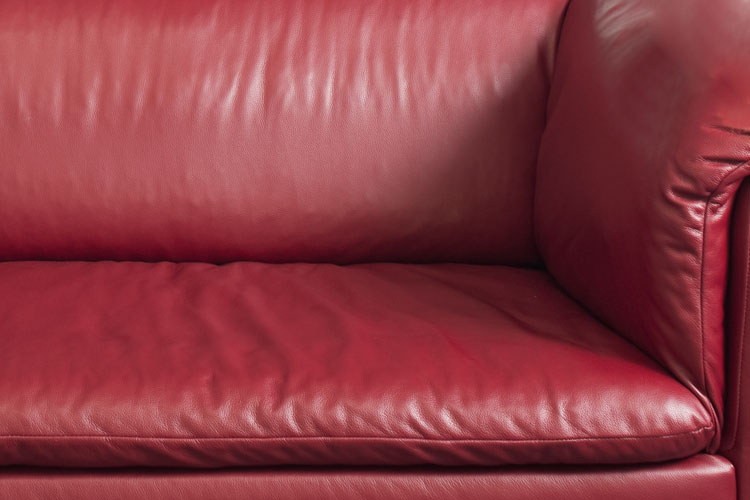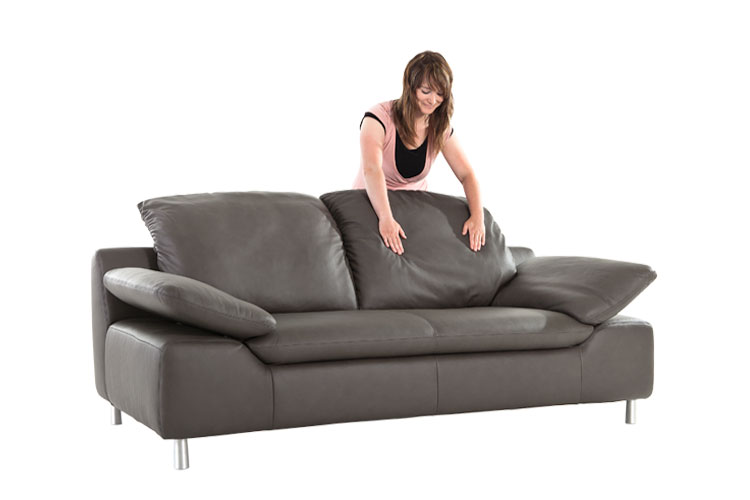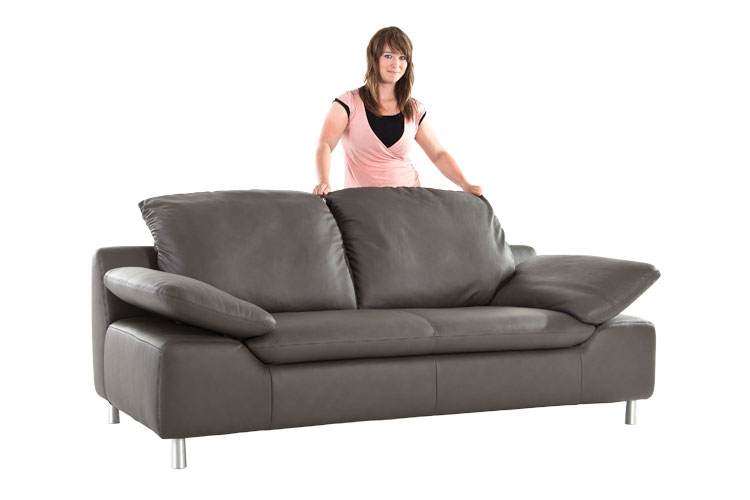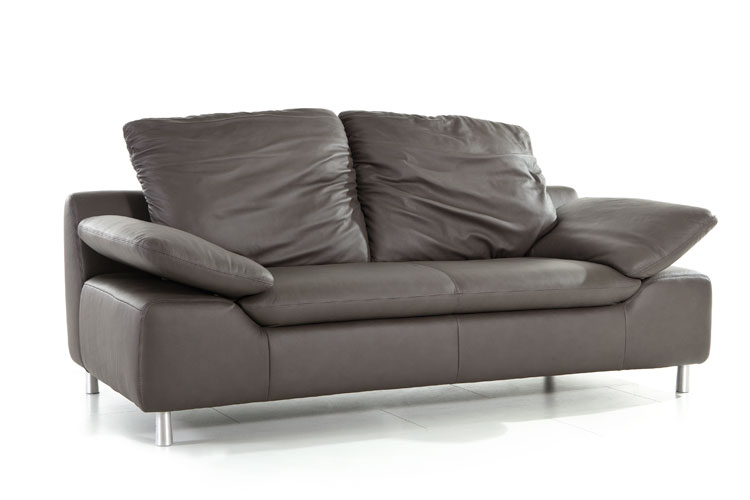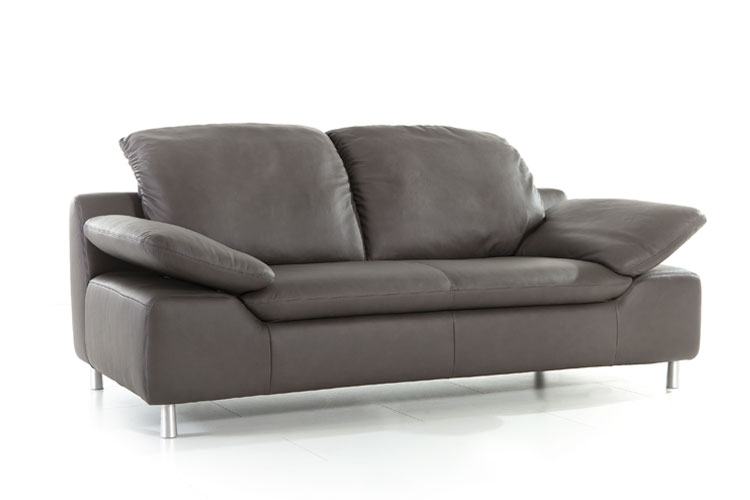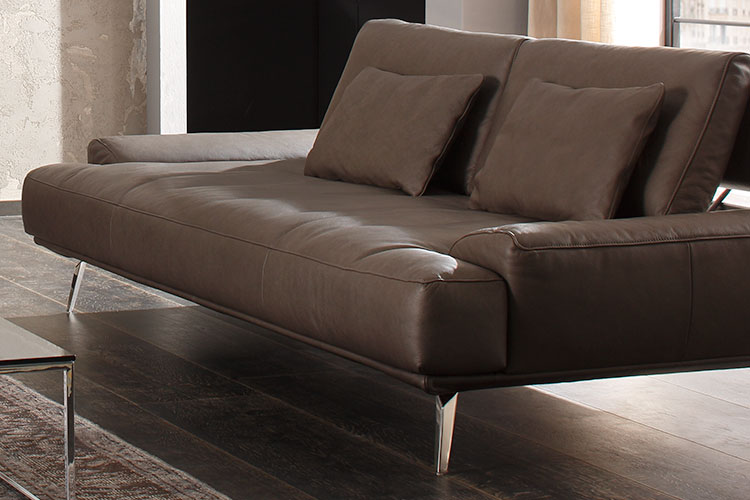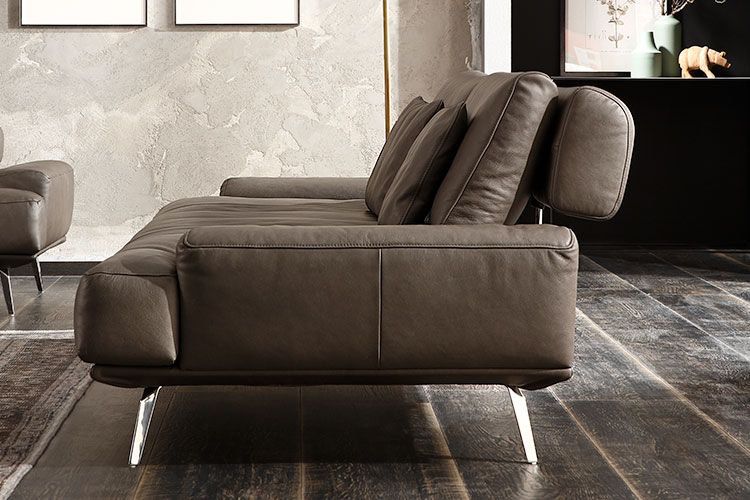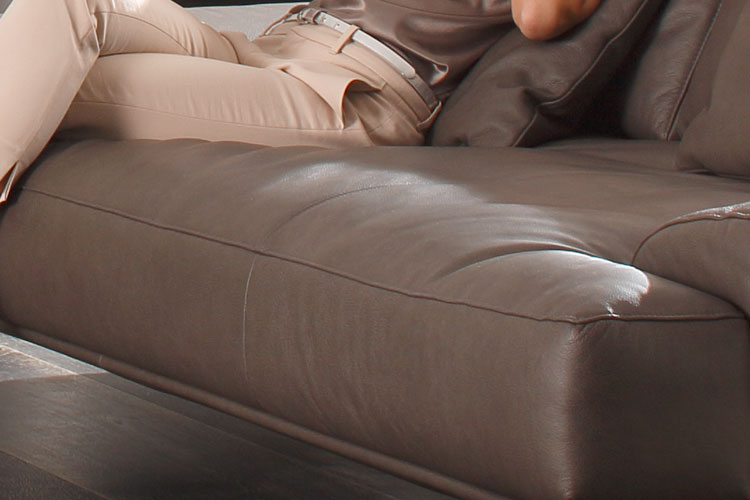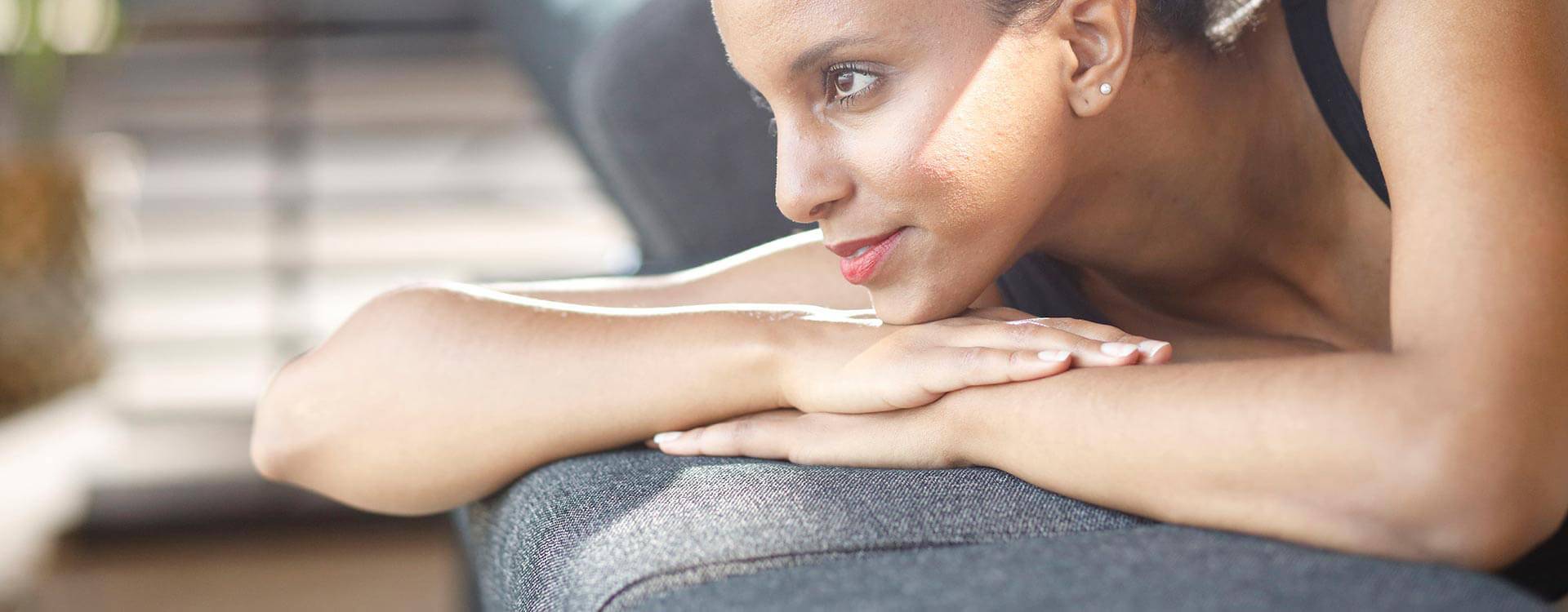
Glossary
A
Air humidity, heating, room climate
Materials made from wood are natural materials and are therefore constantly exposed to the moisture content of the air in the room. Wood therefore works and changes constantly. Furniture made from solid wood, for example, should not be subjected to extremely high or extremely low humidity. Furniture made from solid wood is unsuitable for underfloor heating, or must be provided with special protection. Otherwise the wood starts to work, contracts, shrinks, and glued joints may open or cracks may occur.
According to medicine and science, the room climate which is best for people and plants should be an annual average relative humidity of 45-55 % and a temperature of 18-23 °C. Short-term deviations from these recommended values are not damaging immediately, but long periods with values that are too extreme must be avoided. It is therefore advisable to install a thermometer and a hygrometer in the room. With upholstered furniture and textiles, carpet etc., if the air is too dry sensitive electrostatic charging can occur (see electrostatic charging). If the walls are continuously damp, mould and material damage can occur.
B
Body weight
According to RAL 430/4 the strength test is carried out with a fall weight of 75 kg, which corresponds to a body weight of 120 kg. In the event of a body weight of more than 120 kg, the manufacturer must be contacted with regard to the strength and durability of an upholstered furniture item before concluding the purchase agreement. Exceptions can be found in the respective product enclosure.
C
Care instructions
Guiding principle
Please always pay careful attention to the detailed product information, usage, cleaning and care instructions and also the manufacturer’s instructions on the product! We would like you to enjoy our furniture for a long time. No warranty is given for damage caused by incorrect handling or the use of the wrong care materials. This also applies to subsequent stain proofing of fabrics or leather using external products, and extends to the private living area.
Do not put hot, heavy, sharp-edged or damp objects onto high-quality furniture surfaces, since this will cause pressure points or marks. Spilled acidic liquids such as fruit juice and alcohol must be dabbed off immediately and are not allowed to penetrate. Never rub the affected area using a great deal of pressure. Tobacco smoke, kitchen fumes and the effects of the environment leave their traces.
In order to keep furniture in good condition for as long as possible, it must be cleaned at regular intervals.
Characteristic properties
Upholstered furniture is often purchased based on its appearance. Along with the design, comfort and modern comfort functions are important decisionmaking criteria. No matter what materials are used, construction and processing are important product characteristics to consider when evaluating the quality of furniture, because these characteristics do not constitute material defects in the event of later changes from normal, natural use.
Result from specific material qualities (e.g. natural features of leather such as scarring from horns, scratches, brands, scars and differences in colour and structure)
See also »Model-related properties« and »Performance characteristics«
Chemical cleaning agents
Care must be taken with chemical cleaning agents such as acetone, acetic acid, cellulose thinner, sal ammoniac etc. These substances do not just damage the sensitive surface, but can also be a health hazard. Please always read the product description and the manufacturer’s specification carefully.
Chemical reactions
Chemical reactions or discolouration may occur with many furniture surfaces that have long periods of contact with different materials, particularly plastics.
Sweat or grease from the skin, or from the skin of the head via the hair can »migrate« into leather in the event of frequent contact. This grease then oxidises and cancels out the effect of the tanning agents from the leather after long periods of use, which can make the leather lose its structure. The pH value of sweat can also contribute to this effect.
Typical areas on upholstered furniture are the armrests, headrests and also other areas which are subjected to intensive skin contact. Prompt and regular cleaning and care and covering the leather with cushions and throws can slow down these negative changes. Sweating as a result of taking medication is also suspected of having a special effect on leather in isolated cases, although it cannot be assumed that leather is generally at risk from people who take medication. This has not been scientifically investigated to date. Sunscreen and cosmetics such as creams should not come into contact with the leather of furniture via the skin.
Colour and structure differences in solid wood and real wood veneer
Different natural and growth features make every furniture item in which real wood is used »one of a kind« with a unique appearance. Wood changes under the effect of sunlight and daylight, and the more untreated it is, the faster this occurs. Therefore there is no guarantee that the material will have an identical colour and structure, e.g. between a planning sample and the delivered item or between the horizontal and vertical structure of the wood, since this is typical of the product. The structure and colour of wood and veneer from different logs or areas of a log do not match, and colour deviations occur during the usage period of the furniture. When subsequent additions are made therefore it is advisable to have customised furniture manufactured in accordance with appropriate samples. However, these can also change in different ways again over the course of time due to the effects of sunlight and daylight.
Special model-related processing methods such as vertically and horizontally running veneer, »fallen« veneer cutting for visual formatting, veneer and solid wood combinations, end grain and side grain combinations, »re-glued« or parquet gluing in order to achieve shape stability also lead to light and dark colour and structure highlights depending on the type of wood, the location and the light incidence. These colour variations are typical characteristics of the material and are an essential unmistakable authenticity feature.
Colour deviations / colour patterns
Minor deviations between the showroom product and the delivered product in accordance with sample palettes or when re-ordering are unavoidable because of industrial manufacturing tolerances. The colour, texture, structure and pattern can only be approximately achieved, i.e. not 100 %.
The structure of wood etc. also differs considerably from delivery to delivery. This applies to all natural materials, textiles and leather. Deliveries in accordance with colour samples are, therefore, usually excluded from complaints and replacement. We attempt to achieve the best possible match. It is always advisable to order in accordance with special coloured patterns in order to avoid colour and structure differences.
Colour migration / textiles which are non-colour-fast
With light material or leather coverings, colour migration may occur (marking or colour migration) in combination with dark or intensive colour shades, particularly with dark red, blue, black etc. The clothing industry is also aware of this phenomenon. This has been proven to be a defect in the clothing material. This has nothing to do with the quality of the furniture covering. Complaints of this nature can therefore not be accepted.
Marking caused by items of clothing on light upholstered furniture is particularly known from jeans, and on velours leather or microfibres this may also be due to small quantities of abrasive dust residue. This can be rectified by means of careful vacuuming or wiping with a damp cloth. Slight colour changes are typical with the product.
Cushions / chair covers / removable covers
Particular attention must be paid to several things when using removable furniture covers. It is essential to pay attention to the composition of the material and the cleaning information. Can they be cleaned with chemicals? Are they washable, and how? Usually only up to 30 °C. They can easily shrink a little, and if they are not handled properly they may then be impossible or difficult to fit.
E
Electrical devices and electrical components
For all electrical devices and electronic components, special attention must be paid to the usage instructions. Only the replacement devices recommended by the manufacturer may be used. Failure to comply with this will lead to consequential damage, failure, overheating etc.! In the event of failures or problems, a competent customer service company must be consulted.
Electrostatic charging
Furniture materials and other mainly synthetic materials have natural conductivity. Electrostatic charging can occur with furniture materials due to friction with clothing textiles in combination with floor coverings. Electrostatic charging is primarily associated with air that is too dry in living rooms, particularly in the winter months due to long periods of heating and in combination with synthetic materials such as carpets, textiles, textile upholstery, and occasionally with special types of painted surface.
The dry air can lead to »drying out« of the covering. A quick solution can be achieved by increasing the humidity in the room by thoroughly moistening the carpet and wiping down the upholstery (but not making it soaking wet!).
F
Fillings
The delineation of the chambers, quilting and/or filing material is a material and model-related characteristic in quilted mats, chamber cushions and cushions with loose filler material.
Friction resistance
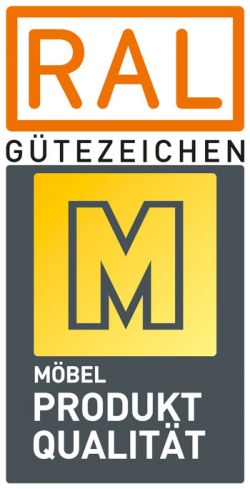 With regard to the colours of furniture fabrics, they are friction resistant if they fulfil the requirements of RAL-GZ 430/4 of the »Deutsche Gütegemeinschaft Möbel e.V.« These requirements determine the extent to which a covering may mark or rub off. Light colours usually have better friction resistance than darker colours. Only distilled water and neutral soap should be used for cleaning, and you should rub carefully with a white, soft clean cloth, always over a large area from seam to seam, gently and without pressure and never on the same spot (colour rub-off and marks)! Please do not use microfibre cloths or steam cleaners. A test in a non-visible location would be advisable.
With regard to the colours of furniture fabrics, they are friction resistant if they fulfil the requirements of RAL-GZ 430/4 of the »Deutsche Gütegemeinschaft Möbel e.V.« These requirements determine the extent to which a covering may mark or rub off. Light colours usually have better friction resistance than darker colours. Only distilled water and neutral soap should be used for cleaning, and you should rub carefully with a white, soft clean cloth, always over a large area from seam to seam, gently and without pressure and never on the same spot (colour rub-off and marks)! Please do not use microfibre cloths or steam cleaners. A test in a non-visible location would be advisable.
Caution: Always pay attention to the detailed manufacturer’s information on the product! The warranty/guarantee does not cover damage caused by external products such as steam cleaners, impregnation and cleaning material that is not recommended by the manufacturer, marking caused by jeans and other textiles which are not colour-fast, Velcro tape on leisure clothing and other stuck-on substances containing sugar, acid, plasticiser, bleach or solvent, alcohol residue, adhesive tape of any kind (e.g. Sellotape).
Furniture polishing
Unless they are special polishes you are more likely to damage your furniture. Silicone marks are difficult to remove afterwards.
G
Glass, glass tables
Glass manufactured using the float procedure complies with the EU standards and DIN 1249. Under polarised light, irritation effects such as small amounts of clouding, rings, streaks or drawing defects in the spectral colours are physically related and unavoidable. However, the safety and load-bearing capacity of the glass may not be affected. Glass tolerances are defined in the RAL-GZ 430/4 quality and test conditions, among other things.
Glass surfaces are sensitive to scratching, and sharp-edged objects may not be put down or dragged without protection. Particularly hot pans or bottles out of the freezer can make float glass break. Cleaning takes place using normal glass cleaning agent. Since glass is used as a useful and decorative surface in a wide range of variants and qualities, special attention must be paid to the respective manufacturer information and the cleaning and care instructions.
I
Installation instructions / enclosures
Must be followed.
L
Leather – different qualities
Natural aniline leather is the highest quality leather, but also the most sensitive to soiling and light. Since it does not have any pigmentation whatsoever, all natural features and structural differences are visible. It remains naturally soft, warm and cosy and provides a pleasant seat climate. It is breathing, absorbs moisture and then gives it off again. The colours have a natural attractiveness, and the leather has a velvety, sophisticated sheen.
Refined aniline leather has an extremely fine superficial colour application in comparison to natural aniline leather, which reduces the colour differences in the leather without affecting the warmth, cosiness and breathing activity thereof. The characteristics of natural leather are retained.
Slightly pigmented semi-aniline leather is a good compromise between naturalness and ease of care. The leather is only superficially pigmented and therefore retains its natural softness. However, the Longlife protection from W.SCHILLIG makes it significantly less sensitive to soiling. Colour differences are minimised, and natural features are less visible than with natural leather. The light fastness is increased. The leather is warm and kind to the skin.
Pigmented leather is extremely family friendly, robust and hard-wearing. Because of its stronger colour application, it has fewer natural characteristics but still has a pleasant feel. It is extremely easy to look after and is insensitive to normal household soiling. The colour is even and the light fastness is outstanding.
Leather – naturally high quality
Leather is the most valuable and the most hardwearing natural cover material available for upholstered furniture. As with any natural product, leather is unique, with different colours, scarring and other living features. These natural features and colour deviations are no reasons for complaint!
Because no two pieces of leather are alike, each piece of furniture is unique. It has so far never been possible to make an exact copy of real leather with all its features. Using the photographs on the left, we would like to illustrate and explain some of the most common natural features. At the same time, we would like to define what normal features may be used and show what features have to be recognised as a complaint if they are accidentally used. See also our:
The location of the natural feature is also crucial in the evaluation. Specialists differentiate between seat, back, arms and body and it also depends on the leather (for example, brands may be used in rustic leather). If the following examples are »conditional«, it means that, depending on the size and location of the natural feature in individual cases, only an expert can decide whether it is a permitted natural feature or not. In particularly difficult cases, only a recognised expert from a chamber of commerce and industry can make the decision. Please be sure to pay attention to the manufacturer’s care instructions with regard to leather! The colour, appearance and feel of leather can change under the effect of light, spotlights etc., and particularly sunlight. Long-term use in the vicinity of radiators can dry out the leather and make it porous and brittle (see room climate and light fastness). Depending on the type and quality of real leather and the amount of use, regular cleaning and care is essential. A specialist should be consulted in the event of persistent problems.
Leg and floor protection
Pay attention to the leg connections of the furniture when making your purchase. Industrial mass production determines the model-specific standard thereof. In order to protect the different floors from scratches or damage, separate protective underlays such as felt, plastic, rubber or other glides must be placed beneath the manufacturer’s leg variants if necessary.
Light fastness in accordance with RAL-GZ 430/4
Light fastness is the resistance of a covering material to the effect of light (particularly sunlight, daylight, halogen lighting etc.).
Light sources such as this (particularly sunlight) change surfaces, particularly wood surfaces, natural materials (e.g. cotton) and leather. This type of »sunburn« leads to colour changes due to chemical build-up. The discolouration of the material under the influence of light cannot be prevented in furniture coverings. Natural wood can go darker or yellow, and stained wood can fade. Valuable furniture must be protected from extreme light effects, since »absolute« light fastness cannot be achieved.
The elemental power of the sun changes any material! Particular care therefore must be taken in bright south-facing rooms with a large proportion of light and glass. Particularly in sunlight, curtains or blinds should be closed, since otherwise the colour or brightness of the covering materials and surfaces may change in the affected locations after just a few weeks. »Colour changes« such as this have no influence on the usage or service life of the furniture.
Location
Upholstered furniture, furniture items, tables, functional furniture etc. must be horizontally aligned and straight when it is set up or installed. Small height differences due to uneven floors or unevenness during installation can lead to consequential damage to the subframe after weeks or months, e.g. cracking or squeaking noises. In order to protect your floor from scratches, the respective floor covering must be protected with an additional underlay (e.g. felt glides).
M
Maintenance
In this case, the manufacturer’s instructions on the product must always be followed! Daily use leaves traces behind. It is important for spilled liquids or contamination (e.g. fruit juice, alcohol etc.) to be dabbed off immediately with an absorbent kitchen towel or clean cloth/dishcloth – not rubbed, so that the liquid cannot penetrate the surface. Do not use microfibre cloths. Do not rub on the spot, and do not use furniture cleaner containing silicone. Never remove damaged areas using solvents (e.g. stain remover, turpentine, petrol, and certainly not a steam cleaner).
Marking
Caution is required with textiles that are not colour-fast, particularly dyed cotton materials such as jeans and T-shirts in intensive colour shades (red, black, dark blue etc.), which can cause marking because of body heat, moisture etc. This frequently happens with light covers on upholstered parts. This is usually caused by the textiles, not the upholstered furniture. The same applies to full-grain or velours leather. Please read the product information from the textile and leather manufacturers.
Measurement, installation and alignment
The measuring and planning of furniture is one of the most important tasks during furnishing and installation. The purchaser is responsible for ensuring that the furniture will actually fit in the house or apartment!
Furniture should not be placed flush against the wall or too close to radiators or light sources. Sufficient air circulation must be provided. It is essential for furniture items to be aligned straight! Failure to do this will quickly result in consequential damage (e.g. tilting, trapping, squeaking, tearing, scratching and distortion) and even material breaches!
Metal parts and finishes
Structural and colour deviations cannot be avoided. Painted metals, anodised or polished aluminium: A weak solution of washing-up liquid can be used for cleaning these metals. Alcohol and cleaning agent must not be used under any circumstances. Always wipe dry. For painted metals, anodised, polished or brushed aluminium, chromium, gold-plated surfaces, stainless steel, high-gloss polishing etc. the cleaning and care instructions must be adhered to.
Microfibre cloths
Not everything that is available for chrome, stainless steel, metal, mirrors and glass is good for furniture as well. Therefore: Just to be safe, do not use microfibre cloths for furniture surfaces, upholstered furniture coverings such as leather, artificial leather or fabrics of any kind. Soft, clean cloths made of cotton are more suitable, particularly in combination with the right cleaning agents.
Model-related properties
Upholstered furniture is often purchased based on its appearance. Along with the design, comfort and modern comfort functions are important decisionmaking criteria. No matter what materials are used, construction and processing are important product characteristics to consider when evaluating the quality of furniture, because these characteristics do not constitute material defects in the event of later changes from normal, natural use.
Describe the visual appearance of a model (e.g. firm, loose or very loose upholstery). The formation of ripples is not a quality defect but a model-related characteristic which provides optimum
See also »Characteristic properties« und »Performance characteristics«
N
New builds
The floors and walls of new buildings are sometimes extremely damp after moving in. Excessive building moisture and relative humidity of more than 65 % are often unavoidable in the first few months. In this condition, furniture items must not be fitted or placed directly next to or with extensive areas of the furniture touching the wall until all floors and walls have dried properly. Otherwise moisture damage could quickly occur, materials could swell or unhealthy mould formation or mould stains could occur.
The north side of the building is particularly critical. In these cases, sufficient air circulation behind the furniture items must be provided. This is extremely important. Air which is too dry is just as damaging to persons and material as air that is moist. The correct annual averages are a temperature of 18-23 °C and relative humidity of 45-55 %.
See also »measurement, installation and alignment« and »air humidity« for more information.
O
Odour
It is well known that new things have an odour. This can last for several weeks or months, depending on the material and the composition. Frequent ventilation or wiping with a damp cloth can help with this. Certain products such as leather or solid wood have a certain odour which is permanently present.
Oil-treated and waxed surfaces
Long-term care includes appropriate special oil and wax. The oil or wax should be refreshed before or after the heating period, but no more than once or twice per year is recommended. During glass and mirror cleaning, grease-dissolving glass cleaning agent must not come into contact with oiled surfaces. Clean the surfaces before re-oiling / waxing.
P
Performance characteristics
 Upholstered furniture is often purchased based on its appearance. Along with the design, comfort and modern comfort functions are important decisionmaking criteria. No matter what materials are used, construction and processing are important product characteristics to consider when evaluating the quality of furniture, because these characteristics do not constitute material defects in the event of later changes from normal, natural use.
Upholstered furniture is often purchased based on its appearance. Along with the design, comfort and modern comfort functions are important decisionmaking criteria. No matter what materials are used, construction and processing are important product characteristics to consider when evaluating the quality of furniture, because these characteristics do not constitute material defects in the event of later changes from normal, natural use.
Are changes caused by use that do not reflect upon workmanship and quality (e.g. »favourite spot« on upholstered furniture).
See also »Model-related properties« and »Characteristic properties«
Pets
Extreme caution must be taken in this case. With pets it is the same as with all beings or objects that you are fond of – tolerance and understanding is required. Pets cannot be monitored 24 hours per day. It is up to the pet owners, house or apartment owners to supervise pets. A great deal of information is available from specialist magazines and media such as Stiftung Warentest (German consumer safety group), »Ein Herz für Tiere« (»A Heart for Animals« magazine) etc.
One thing is for sure: Claws and animals with beaks can cause considerable and often irreparable damage. Animal hair, particularly cat hair, is difficult to remove from textiles. Cats, dogs etc. are free-roaming and bring everything possible with them into the house. There should not be any contact between animals and the coverings of furniture in order to protect small children and babies.
Effective protection would be to protect the furniture that is at risk with suitable materials (covers, throws, etc., which can be washed or dry cleaned) from damage by animals.
Pilling formation
To begin with, small knots appear on some covering materials (mainly flat and mixed fabric) like the ones on woollen pullovers. These are usually caused by contact with external textiles which the user is wearing when sitting on the upholstered furniture. External pilling is a characteristic that is typical of the product, not a material defect.
Special fluff removers are available with which the pills can be removed without problems in accordance with the manufacturer’s instructions without damaging the covering fabric. Or they are loose particles of the yarn that has been used, usually mixed with clothing fluff. Pills frequently occur after a short period of use. Pilling formation and the removal of pills do not affect the durability of the furniture fabric.
Planning materials and delivery
A prerequisite for defect-free delivery and installation is exact determination of requirements, including room sizes, dimensions, wall composition and free access to the installation location (including door, stairway and corridor widths, lift, floor etc., these details come from the purchaser). The following must be clarified: Have the sockets and light switches been correctly routed? It must also be taken into consideration that the floor, walls and ceilings are not quite straight and must therefore be adapted and compensated for during installation. If changes are made to the rooms at short notice, the vendor and the installer must be notified thereof in good time. The relevant room must be accessible. The furniture must be arranged in such a way that it is horizontally aligned.
Pressure points
Pressure points on furniture and furnishing items can occur extremely quick and in a variety of ways. With carpets this results in pile displacement (pressure point caused by the leg of a sofa, for example), which manifests itself to varying degrees depending on the light incidence and the observation angle. So-called »wear lustre« can appear in velour materials. These are »product-typical characteristics«. If pressure points occur due to external influences on furniture during use, e.g. on leg of the furniture caused by collisions with the vacuum cleaner, these are known as »wear marks«.
R
Ripple and hollow formation (crease formation)
Definition of term in accordance with RAL-GZ 430/4: »A ripple is a deformation that deviates from the original upholstery surface. A crease is a ripple with a kink«. The measuring method and the tolerances can be found in RAL-GZ 430/4. With so-called »sitting in« or »lying in« the seat firmness and the appearance usually change after even a short period of use. The seat firmness reduces depending on the type and duration of use. The body weight of the person(s) using the furniture also plays a part.
This is a normal process which all upholstery goes through. In order to achieve even seat firmness for as long as possible, it is important to switch your favourite places on upholstered furniture. Otherwise one-sided ripple or hollow formation may occur. This development is supported by the fact that the covering materials stretch more or less under the influence of body weight and heat and cause »ripples« to form.
These visual changes have little influence on usage, functionality and service life, and are not a defect. Regular plumping of the coverings and cushions are a part of normal duty of care. The »ripples or creases« can be measured by specialists or experts exactly and in accordance with regulations.
Exception
This procedure for determining the ripple may not be carried out on »very loose« models, since for design reasons the cut of the covering has been kept somewhat bigger or the upholstery structure contains softer materials (e.g. down coverings, extremely delicate padding, mat coverings, belt spring base etc.). The guideline values cannot be used in this case. The ripple formation may be more pronounced here, without being a cause for complaint. Source: RAL-GZ 430/4. »Stiftung Warentest« recommends using the seats as evenly as possible so that the appearance can adapt itself to your sitting habits. If you do not like or even reject this soft appearance, you should choose sitting and lying furniture with »firm« padding.
S
Sensitivity
It is well known that light and single-colour coverings or materials are generally more sensitive than dark, patterned materials or muted colours. This also applies to any stain protector impregnation which may be present and »natural products« in general. The more natural a product, the less sensitively it reacts to external influences.
Sheen / Wear lustre
This effect occurs in all velvety materials such as velours, chenille materials and possibly microfibres or velours-like surfaces such as carpets or textiles. The deeper the pile (cosy, soft) the flatter it will be made by body pressure, body moisture, heat and sitting position. Depending on the light incidence and the observation angle, it can then have a light/dark or matt/glossy effect. This is not a material defect but a characteristic that is typical of the product. It has no effect on the use, benefit, functionality or service life of the covering.
Solid wood
Solid wood is a phenomenon »it is always working«. Solid wood is one of the most versatile, sophisticated and most beautiful natural products that is used for furniture and interior furnishings. It is literally a »natural one of a kind«. This is where nature shows man that it is difficult to tame. It is not the solid wood which adapts itself to people and their dwellings, but the other way round. Man must adapt his living climate to nature and its characteristics. The wood that is sourced for worldwide furniture manufacturing now mainly originates from controlled forestry. The product information about the different types of special wood such as maple, oak, beech heart, willow etc. is a useful aid to finding out more about the properties of the wood.
Note: Tolerances in solid wood, e.g. dimensional, colour or structural dimensions, can be present when the furniture is new, i.e. upon delivery.
Steam cleaners
Steam cleaners are not suitable for furniture, even if certain advertising promises otherwise. The steam pressure can destroy surfaces relatively quickly.
T
Tolerances
 Tolerances cannot be avoided in furniture during industrial mass production and for technical manufacturing reasons. The majority of tolerances are laid down in the quality and test conditions RAL-GZ 430/4 of the »Deutsche Gütegemeinschaft Möbel e.V.« with the »Golden M« quality symbol. If the deviations (tolerances) are in the insignificant range with regard to colour, dimensions and structure as far as the national and international standard is concerned, no defect is present. These are »product-specific characteristics«. These are acceptable production and manufacturing deviations – almost always minor visual deviations which have no effect on usage, benefit, functionality, safety and service life.
Tolerances cannot be avoided in furniture during industrial mass production and for technical manufacturing reasons. The majority of tolerances are laid down in the quality and test conditions RAL-GZ 430/4 of the »Deutsche Gütegemeinschaft Möbel e.V.« with the »Golden M« quality symbol. If the deviations (tolerances) are in the insignificant range with regard to colour, dimensions and structure as far as the national and international standard is concerned, no defect is present. These are »product-specific characteristics«. These are acceptable production and manufacturing deviations – almost always minor visual deviations which have no effect on usage, benefit, functionality, safety and service life.
Tools
Only use the fittings, tools and materials prescribed by the manufacturer. Failure to do this usually invalidates the warranty. In case of doubt, consult an expert.
U
Upholstered furniture in general
Upholstered furniture is soft and malleable. It should not be purchased on the basis of attractiveness alone, but also in accordance with the respective requirements. That which is often underestimated is the fact that upholstered furniture is used for about 3-5 hours per day, usually in a favourite location. Visual changes are then unavoidable, and normal wear will occur. This has very little effect on usage, benefit or service life.
Upholstered furniture must be horizontally aligned and be straight. If the floor is uneven or made uneven because of carpets, this must be compensated for or something placed beneath the furniture (please pay attention to product information).
Upholstery – firm, loose, very loose
A distinction must be made between »firm«, i.e. essentially smooth upholstery and »loose« or »very loose« upholstery
With all upholstery, a reduction in seat firmness is unavoidable depending on the duration of use and the body weight of the persons using the furniture. It is also relevant whether »chamber cushions« have been processed. This can lead to impairment of the individual chambers. This is a characteristic which is typical of the product and is not a reason for complaint. In order to flatten the surfaces after use, depending on the type of upholstery the seat cushion and the back cushion should be plumped at regular intervals.
»Firm« upholstery
With this type of upholstery, the covering is pulled tight over the padding and joined. This avoids excessive crease formation during use. In the majority of cases, the creases that are formed during sitting even themselves out again. However, permanent crease formation may occur as the amount of use increases, minor though it may be. This is not a quality defect but a characteristic that is typical of the product, and is not attributable to deterioration of the upholstery but the expansion of the covering material. A typical recognition feature is its straight-lined appearance. The seating comfort differs from other types of upholstery in that you do not sink very deep into the padding but sit firmly on top of the padding. Lines, e.g. at curves or gatherings are design, model or structure-related.
»Loose« upholstery
The »loose upholstery« that we prefer is recognisable by its suppleness. With this type of upholstery, the covering is not continuously attached to the padding. The padding is softer and the cover is looser, meaning that you sit »in the sofa« and not »on the sofa«. A visually rippled surface of the coverings and wear lustre are not a quality defect, but are model-related or desirable from a design point of view, for providing optimum sitting comfort. It can be assumed that the upholstery is soft if gathers or rippling are present in some locations. It can be assumed that the coverings will stretch during use and the formation of ripples may increase. However, this change does not affect usability.
»Very loose« upholstery
»Very loose upholstery« is characterised by the extremely soft surface. The coverings can have a distinct ripple pattern when the furniture is new, which is desirable from a design, model and construction related point of view. It can be assumed that the coverings will stretch during use and the formation of ripples may increase. However, this change does not affect usability (see also »Ripple and hollow formation«). The filling material is contained within the cushion in chambers so that it does not shift. Both the chambers and the material are more of less apparent depending on the type and thickness of the covering material. In order to minimise usage-related ripple/crease formation, depending on the amount of use the coverings of the seat cushion and the back cushion must be plumped at regular intervals.
Upholstery with chamber cushions
Some of the suites in our collection are equipped with high-quality chamber cushions (inlets) in the seat and/or the back cushion. Depending on the model, the filling of these cushions can consist of pieces of foam or flakes in a mixture of polyester fibres. The filling material is contained within the cushion in chambers so that it does not shift. Both the chambers and the material are more of less apparent depending on the type and thickness of the covering material. In order to minimise usagerelated ripple/crease formation, depending on the amount of use the coverings of the seat cushion and the back cushion must be plumped at regular intervals.
Use for correct purpose
Furniture that has been manufactured for the private living area may also only be used for general living requirements. It is not suitable for commercial or external areas. This applies to commercially used holiday apartments, offices, hotels etc. In the case of orders for the commercial area or the project area and public institutions, the applicable standards, safety regulations and basic rules must be followed.
